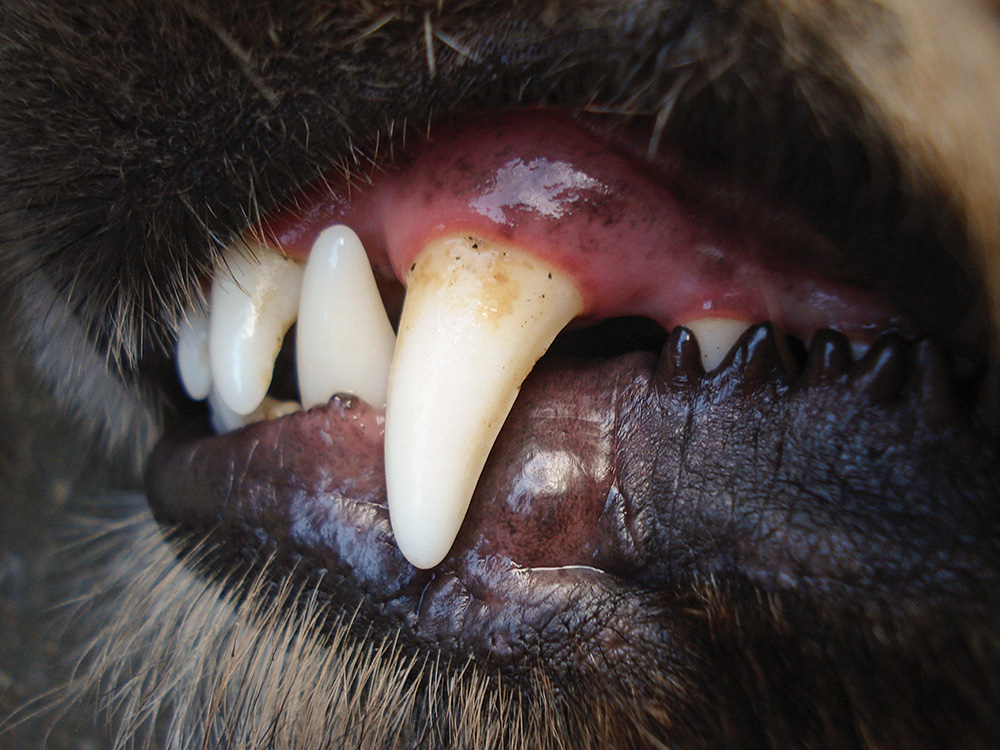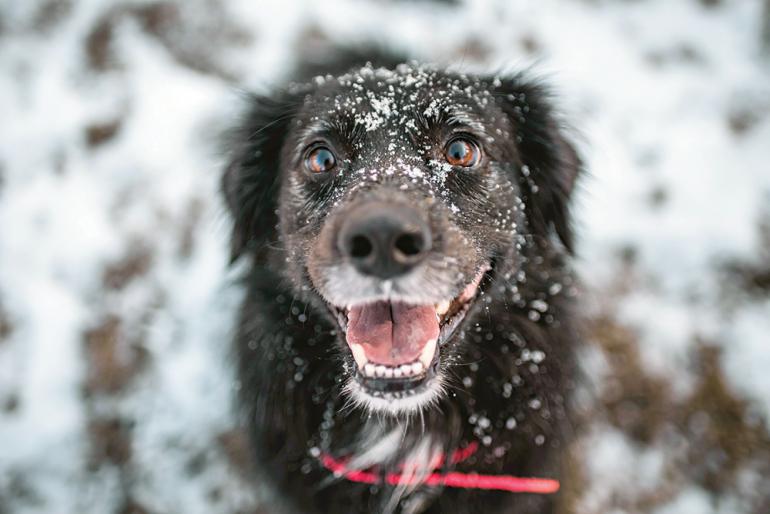Dog Breath
Dental care for canines.
You awaken warm, snuggled up and comfy, only to find your face smeared in a puddle of smelly dog drool on the pillow.
You return to the car after a brisk hike with your pup, only to have your nose hairs burned to the roots by your dog’s foul breath as his heavy, happy panting fogs the windows.
Dental disease is the most common type of disease affecting our pets. If left untreated, it can result in damage to the kidneys, liver, and heart. Over 80% of dogs three years and older have periodontal disease, an infection of the tissues that connect the teeth. As with humans, chronic dental disease in pets often has a genetic component, and according to most veterinarians, dogs do best with a dental evaluation every six to twelve months. Periodontal disease and fractured teeth (often resulting from chewing on hard items like antlers or bones) are the most common problems.
Dogs are often extremely stoic, and even though they may have terrible, painful teeth, they’ll still have strong appetites and will continue to chew on toys. Signs of dental disease are subtle and rarely noticed by even the most astute pet owners. It’s often only after the animal has received dental care that an owner will report changes of behavior.
Animals aren’t the most compliant when it comes to treatment, so dogs usually undergo general anesthesia for dental procedures. By using an endotracheal tube, there is far less chance of water or other fluids, polishing paste, or bacteria entering the pet’s airway to cause respiratory issues, such as pneumonia, after a dental procedure. Typically, a pet will also receive fluids through an IV catheter as well.
X-rays are usually taken after cleaning to assess possible tooth fractures, bone loss, or tooth-root abscesses. Many of the dental problems in pets are hidden under the gumline, thus X-rays are necessary to detect them. In dogs, 28% of dental problems are in teeth that appear perfectly normal. Diseased teeth in pets often require extraction to eliminate the pain, though in some cases, they can be saved with advanced procedures. In these instances, the remaining teeth are cleaned and polished by a general practitioner, with the pet later passed to a board-certified veterinary dentist for further work. Veterinary dentists also help with temporary orthodontics, in cases where teeth have grown in a manner that causes problems when chewing.

Dog owners can help reduce dental disease by brushing a minimum of once every other day. More is better, and don’t use human toothpaste—pet-specific toothpaste only. Other preventive measures include dental wipes, dental-specific chews, or other products carried by veterinary offices. While many dog owners use bones or antlers to help prevent tartar buildup, these hard items commonly cause tooth fractures, which can create far greater (and more expensive) problems. If you consider the fact that a several-hundred-pound animal uses antlers to clash against other several-hundred-pound animals, it makes sense as to why a dog tooth can break when chewing on them. Ask your veterinarian about available dental-health aids.
To help your furry friend live the best, most healthy life possible, stay up to date with annual veterinary visits and keep checking those teeth at home as well. Pull back the cheeks and look at the gum color and teeth in the very back of the mouth. A pet should never have foul breath odor. If it does, something needs to be done. Keep that canine smile healthy and clean, and your dog will thank you for it—and you’ll thank yourself for a clean pillow and pleasant drive home.
Julie Oghigian, DVM, CVA works at Alpenglow Animal Hospital; Tony Woodward, DVM, AVDC works at Montana Pet Dentistry and Oral Surgery.










